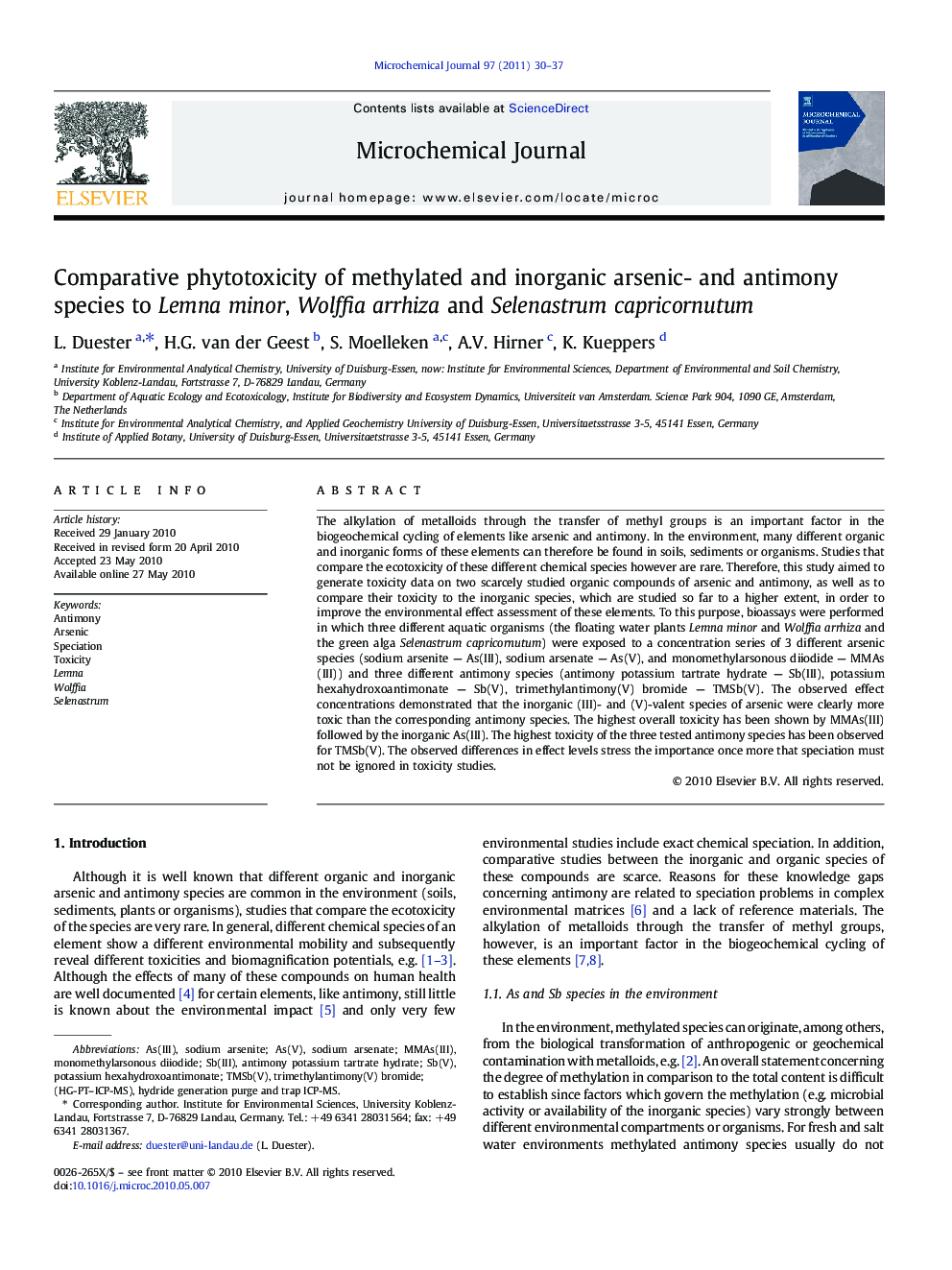| Article ID | Journal | Published Year | Pages | File Type |
|---|---|---|---|---|
| 1228243 | Microchemical Journal | 2011 | 8 Pages |
The alkylation of metalloids through the transfer of methyl groups is an important factor in the biogeochemical cycling of elements like arsenic and antimony. In the environment, many different organic and inorganic forms of these elements can therefore be found in soils, sediments or organisms. Studies that compare the ecotoxicity of these different chemical species however are rare. Therefore, this study aimed to generate toxicity data on two scarcely studied organic compounds of arsenic and antimony, as well as to compare their toxicity to the inorganic species, which are studied so far to a higher extent, in order to improve the environmental effect assessment of these elements. To this purpose, bioassays were performed in which three different aquatic organisms (the floating water plants Lemna minor and Wolffia arrhiza and the green alga Selenastrum capricornutum) were exposed to a concentration series of 3 different arsenic species (sodium arsenite — As(III), sodium arsenate — As(V), and monomethylarsonous diiodide — MMAs(III)) and three different antimony species (antimony potassium tartrate hydrate — Sb(III), potassium hexahydroxoantimonate — Sb(V), trimethylantimony(V) bromide — TMSb(V). The observed effect concentrations demonstrated that the inorganic (III)- and (V)-valent species of arsenic were clearly more toxic than the corresponding antimony species. The highest overall toxicity has been shown by MMAs(III) followed by the inorganic As(III). The highest toxicity of the three tested antimony species has been observed for TMSb(V). The observed differences in effect levels stress the importance once more that speciation must not be ignored in toxicity studies.
